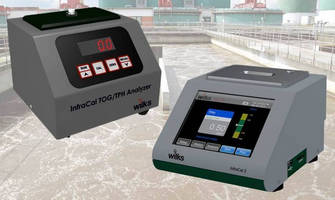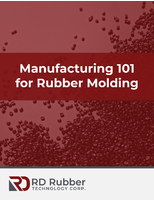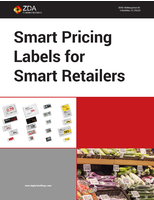On-Site Analyzers measure oil/grease levels in wastewater.
Press Release Summary:

Suited for industrial and food processing plants, InfraCal Analyzers offers results in 10–15 min. Evaporation-based InfraCal Model HATR-T2 and InfraCal 2 ATR-SP, with respective min detectable limits of 8 and 0.3 ppm, use hexane, pentane, or Vertrel MCA for extraction process. With respective min detectable limits of 2 and 0.1 ppm, InfraCal Model CVH and InfraCal 2 Model TRANS-SP use Freon 113, perchloroethylene, or S-316 as extracting solvent. Oil concentration is measured directly in solvent.
Original Press Release:
Measuring Oil and Grease Levels in Wastewater
East Norwalk, CT – Industrial and food processing plants that have high levels of fats, oil and grease (FOG) in their effluent are faced with stricter wastewater regulations to avoid accumulations of FOG that cause sanitary sewer overflows (SSO). InfraCal Analyzers provide accurate, easy on-site analysis to help both regulators and industry reduce excessive oil/grease discharges and comply with permit requirements. These analyzers provide on-site results in 10-15 minutes, eliminating the wait for remote lab results which can take several days to a week. The extraction and measurement procedure is simple enough for an operator with minimal training to do the analysis.
Both the InfraCal Model HATR-T2 and new InfraCal 2 ATR-SP, use hexane, pentane or Vertrel MCA for the extraction process. Measurement data from either model will correlate to EPA Method 1664 as both procedures are based on evaporation techniques and measure the residual oil and grease. They are equipped with an exposed, easy to clean cubic zirconia horizontal attenuated total reflection (HATR) stainless-steel sample stage on which the extract is deposited for analysis. The InfraCal Model HATR-T2 has a minimum detectable limit of 8 ppm oil in water and the InfraCal 2 ATR-SP will measure down to 0.3 ppm.
The InfraCal Model CVH and new InfraCal 2 Model TRANS-SP are based on US EPA Methods 413.2 and 418.1 and ASTM D7066-04, which uses Freon 113, perchloroethylene, or S-316, as the extracting solvent. Since the oil concentration is measured directly in the solvent, light end volatile components are retained and measured. The InfraCal Model CVH has a minimum detectable limit of 2 ppm oil in water. It was one of the instruments used to develop the ASTM D7066 oil in water method. The InfraCal 2 TRANS-SP will measure down to 0.1 ppm.
In addition to lower detection limits, the InfraCal 2 analyzers has added features which include multiple calibrations to cover a larger range of analyses, unlimited data storage that tags measurements with analyst, date and time, and security features with different user access levels.
For further information on the InfraCal for measuring oil and grease levels in wastewater, contact Wilks – A Spectro Inc. Company, 25 Van Zant Street, Ste. 8F, E. Norwalk, CTÂ 06855 USA, TEL: 203-855-9136, FAX: 203-838-9868, Web Site -- www.WilksIR.com – or download information directly at http://www.wilksir.com/oilgrease-analyzers.




